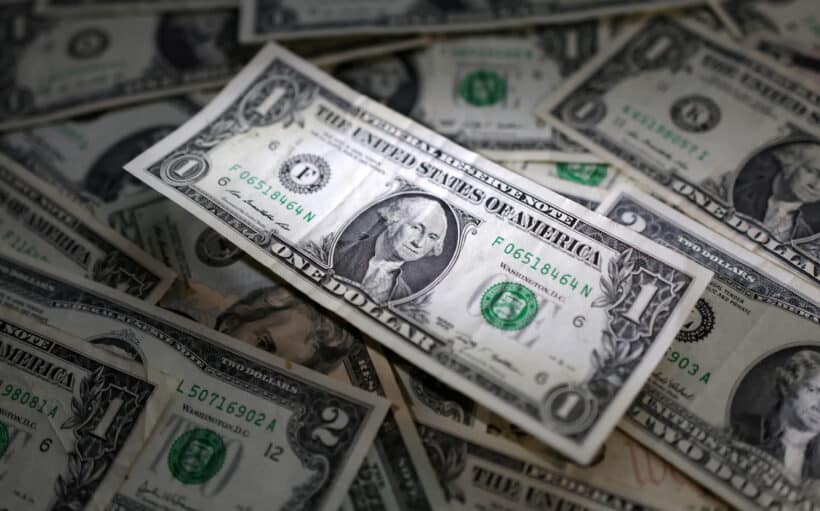
LONDON, Feb 26 (Reuters) – The dollar inched lower on Monday ahead of a macro-packed week that could shed more light on the global rate outlook, with a U.S. inflation reading taking centre stage.
The core personal consumption expenditures (PCE) price index, the Federal Reserve’s preferred measure of inflation, is due on Thursday, with a 0.4% rise on a monthly basis forecast.
Inflation figures in the euro zone, Japan and Australia also land this week, alongside a rate decision from the Reserve Bank of New Zealand (RBNZ) and China PMI surveys.
The euro EUR=EBS was up 0.3% at $1.0854, after gains against the dollar in eight of the last nine trading sessions.
ECB officials have reiterated their focus on inflation in the euro zone, particularly the service sector and wage growth.
European Central Bank President Christine Lagarde on Friday said wage growth had moderated, but it was too early to assume inflation had been conquered.
“Euro zone inflation is expected to cool to 2.5% and yet the ECB minutes still show the reluctance from the ECB to even talk about cutting rates,” City Index market strategist Fiona Cincotta said.
“We also saw inflation expectations in the euro zone ticked up very slightly, but also that upbeat mood on the back of earnings has been pulling some safe-haven flows out of the dollar and has pushed the euro higher,” she said.
A major driver behind the euro’s strength has been the narrowing gap between where traders believe U.S. and euro zone interest rates will finish the year.
Only two weeks ago, investors were assuming the Fed would cut rates by around 80 basis points this year, compared with around 100 bps from the ECB. By Monday, that gap had all but disappeared.
SPOTLIGHT ON INFLATION
The main event for investors this week will be Thursday’s U.S. core PCE. Hotter readings of producer and consumer inflation have increased the likelihood that this measure might top expectations as well, which could further push back expectations for when the Fed might deliver its first cut.
Markets are currently pricing in just about a 20% chance that the Fed will begin easing rates in May, versus a nearly 90% chance a month ago, according to the CME FedWatch tool.
“If anything, the (data) may be stronger than markets currently expect, and that will likely give a modest boost to the dollar,” said Carol Kong, a currency strategist at Commonwealth Bank of Australia (CBA).
The dollar index =USD was down 0.2% at 103.74.
Japan’s nationwide consumer prices are due on Tuesday and are forecast to show core inflation slowed to an annual rate of 1.8% in January, the lowest since March 2022.
That would complicate the Bank of Japan’s (BOJ) plans to end negative interest rates in coming months, keeping the yen under pressure in the near term.
The yen JPY=EBS was last steady at 150.57 per dollar, having already fallen more than 6% against it this year.
“News that Japan fell into technical recession in H2 2023 will have dampened some of the market’s enthusiasm regarding the pace of monetary tightening from the BOJ,” said Jane Foley, head of FX strategy at Rabobank.
Sterling GBP=D3, meanwhile, rose 0.2% to $1.2696, but eased by 0.1% against the euro EURGBP=D3 to 85.50 pence.
In cryptocurrencies, ether ETH= rose by as much as 6.5% above $3,130 to another two-year high. It was last up 3.9% at $3,055, while bitcoin BTC= rose 0.3% to $51,140.
(Additional reporting by Rae Wee in Singapore; Editing by Jamie Freed, Jacqueline Wong, Ed Osmond and Alexander Smith)